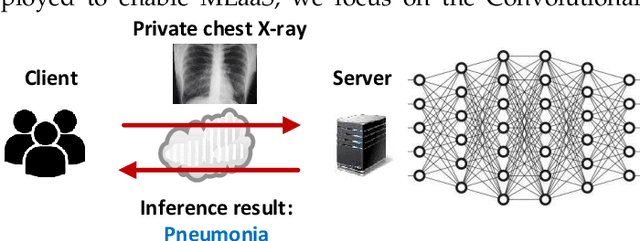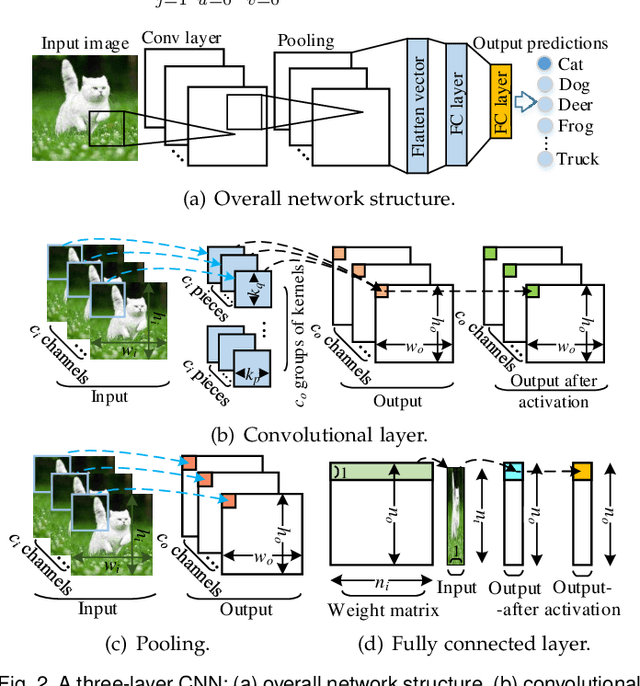Chunsheng Xin
Old Dominion University
Beam Profiling and Beamforming Modeling for mmWave NextG Networks
Aug 23, 2024Abstract:This paper presents an experimental study on mmWave beam profiling on a mmWave testbed, and develops a machine learning model for beamforming based on the experiment data. The datasets we have obtained from the beam profiling and the machine learning model for beamforming are valuable for a broad set of network design problems, such as network topology optimization, user equipment association, power allocation, and beam scheduling, in complex and dynamic mmWave networks. We have used two commercial-grade mmWave testbeds with operational frequencies on the 27 Ghz and 71 GHz, respectively, for beam profiling. The obtained datasets were used to train the machine learning model to estimate the received downlink signal power, and data rate at the receivers (user equipment with different geographical locations in the range of a transmitter (base station). The results have shown high prediction accuracy with low mean square error (loss), indicating the model's ability to estimate the received signal power or data rate at each individual receiver covered by a beam. The dataset and the machine learning-based beamforming model can assist researchers in optimizing various network design problems for mmWave networks.
$\textit{Comet:}$ A $\underline{Com}$munication-$\underline{e}$fficient and Performant Approxima$\underline{t}$ion for Private Transformer Inference
May 24, 2024Abstract:The prevalent use of Transformer-like models, exemplified by ChatGPT in modern language processing applications, underscores the critical need for enabling private inference essential for many cloud-based services reliant on such models. However, current privacy-preserving frameworks impose significant communication burden, especially for non-linear computation in Transformer model. In this paper, we introduce a novel plug-in method Comet to effectively reduce the communication cost without compromising the inference performance. We second introduce an efficient approximation method to eliminate the heavy communication in finding good initial approximation. We evaluate our Comet on Bert and RoBERTa models with GLUE benchmark datasets, showing up to 3.9$\times$ less communication and 3.5$\times$ speedups while keep competitive model performance compared to the prior art.
DeepAuditor: Distributed Online Intrusion Detection System for IoT devices via Power Side-channel Auditing
Jun 24, 2021



Abstract:As the number of IoT devices has increased rapidly, IoT botnets have exploited the vulnerabilities of IoT devices. However, it is still challenging to detect the initial intrusion on IoT devices prior to massive attacks. Recent studies have utilized power side-channel information to characterize this intrusion behavior on IoT devices but still lack real-time detection approaches. This study aimed to design an online intrusion detection system called DeepAuditor for IoT devices via power auditing. To realize the real-time system, we first proposed a lightweight power auditing device called Power Auditor. With the Power Auditor, we developed a Distributed CNN classifier for online inference in our laboratory setting. In order to protect data leakage and reduce networking redundancy, we also proposed a privacy-preserved inference protocol via Packed Homomorphic Encryption and a sliding window protocol in our system. The classification accuracy and processing time were measured in our laboratory settings. We also demonstrated that the distributed CNN design is secure against any distributed components. Overall, the measurements were shown to the feasibility of our real-time distributed system for intrusion detection on IoT devices.
CHEETAH: An Ultra-Fast, Approximation-Free, and Privacy-Preserved Neural Network Framework based on Joint Obscure Linear and Nonlinear Computations
Nov 12, 2019



Abstract:Machine Learning as a Service (MLaaS) is enabling a wide range of smart applications on end devices. However, such convenience comes with a cost of privacy because users have to upload their private data to the cloud. This research aims to provide effective and efficient MLaaS such that the cloud server learns nothing about user data and the users cannot infer the proprietary model parameters owned by the server. This work makes the following contributions. First, it unveils the fundamental performance bottleneck of existing schemes due to the heavy permutations in computing linear transformation and the use of communication intensive Garbled Circuits for nonlinear transformation. Second, it introduces an ultra-fast secure MLaaS framework, CHEETAH, which features a carefully crafted secret sharing scheme that runs significantly faster than existing schemes without accuracy loss. Third, CHEETAH is evaluated on the benchmark of well-known, practical deep networks such as AlexNet and VGG-16 on the MNIST and ImageNet datasets. The results demonstrate more than 100x speedup over the fastest GAZELLE (Usenix Security'18), 2000x speedup over MiniONN (ACM CCS'17) and five orders of magnitude speedup over CryptoNets (ICML'16). This significant speedup enables a wide range of practical applications based on privacy-preserved deep neural networks.
 Add to Chrome
Add to Chrome Add to Firefox
Add to Firefox Add to Edge
Add to Edge